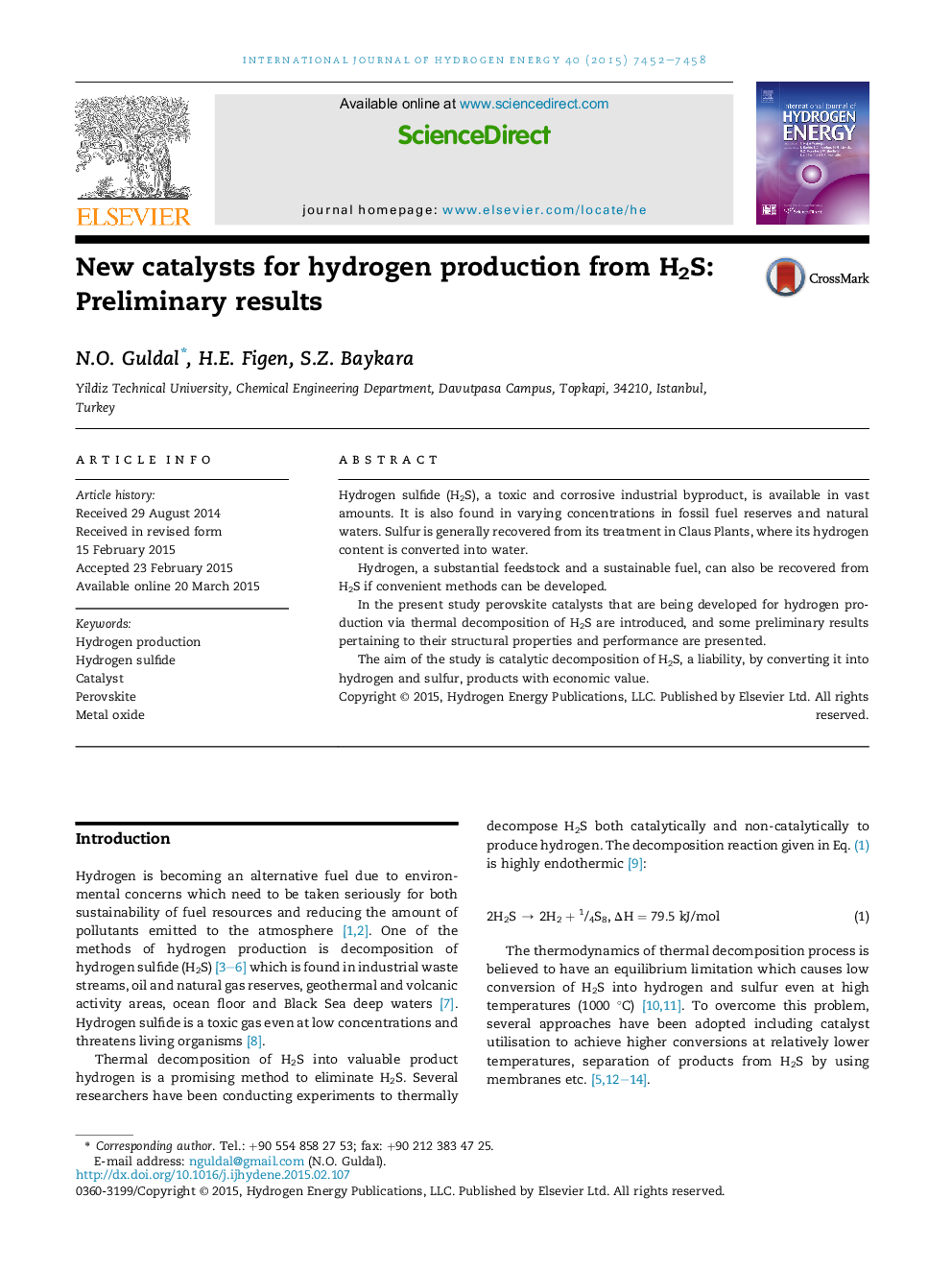| Article ID | Journal | Published Year | Pages | File Type |
|---|---|---|---|---|
| 1279716 | International Journal of Hydrogen Energy | 2015 | 7 Pages |
•Hydrogen (H2) was produced by thermal decomposition of hydrogen sulfide (H2S).•Perovskite catalysts were used for the first time for thermal decomposition of H2S.•Reaction temperature range studied was 550–1000 °C at atmospheric pressure.•Conversion of H2S was found to be 16 % for LaSr0.5Mo0.5O3 at 800°C.•Non-catalytic conversion at 800°C was only 3.3 %.
Hydrogen sulfide (H2S), a toxic and corrosive industrial byproduct, is available in vast amounts. It is also found in varying concentrations in fossil fuel reserves and natural waters. Sulfur is generally recovered from its treatment in Claus Plants, where its hydrogen content is converted into water.Hydrogen, a substantial feedstock and a sustainable fuel, can also be recovered from H2S if convenient methods can be developed.In the present study perovskite catalysts that are being developed for hydrogen production via thermal decomposition of H2S are introduced, and some preliminary results pertaining to their structural properties and performance are presented.The aim of the study is catalytic decomposition of H2S, a liability, by converting it into hydrogen and sulfur, products with economic value.
Graphical abstractHydrogen sulfide conversion values obtained after thermal decomposition of 1% (vol.) H2S balance N2 from non-catalytic reaction, LaSr0.5Mo0.5O3, LaSr0.5V0.5O3 and LaMoO3 perovskite catalysts.Figure optionsDownload full-size imageDownload as PowerPoint slide
